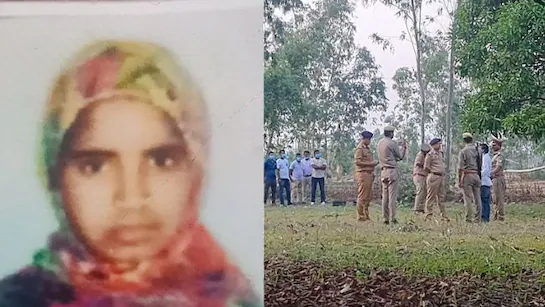In a gruesome case that has shaken the region, a 31-year-old man has been arrested for the brutal murder of his wife, whose dismembered and partially burnt remains were scattered across multiple locations in Shravasti district. The accused, identified as Saifuddin, allegedly killed his 25-year-old wife, Sabina, during a trip to Lucknow, chopped up her body, and disposed of the parts over a 10-kilometre stretch including dumping some into a canal and hiding a burnt hand in a garden.
How the Incident Came to Light?
The crime came to light on May 14, when Sabina’s brother, Salahuddin, noticed her phone was switched off and grew suspicious. After visiting their home and learning the couple had reportedly gone to Lucknow, he was alarmed to see Saifuddin roaming around alone that same evening. Unable to contact Sabina, he filed a missing persons complaint with local police.
Saifuddin was detained for questioning, but initially misled the investigators. After two days of sustained interrogation, he confessed to murdering his wife and detailed how he attempted to destroy the evidence by burning and dispersing her body parts.
Police have since recovered a charred hand from a nearby garden. Search efforts are ongoing to recover the rest of Sabina’s remains. Authorities confirmed that the accused has been booked under relevant sections of the Indian Penal Code, including murder and destruction of evidence.
Family members of the victim allege that dowry harassment was the motive behind the killing. “They had been pressuring her for dowry. He killed her and tried to burn her body. We found her hand,” said Salahuddin.
Rising Trend of Spousal Murders Raises Alarm
This incident highlights a disturbing pattern in India an increase in marital homicides, often rooted in long-standing domestic abuse or dowry-related disputes. Both men and women have been implicated in spousal killings in recent times. In many such cases, body dismemberment and concealment of evidence follow the murder, showing a troubling level of premeditation.
Legal experts and activists point to the lack of early intervention in domestic violence cases, inadequate support systems, and slow legal processes as reasons why such crimes continue. They stress the urgent need for stronger domestic violence prevention frameworks, public awareness campaigns, and more robust community support for victims.
The Shravasti case joins a growing list of tragic incidents where intimate partner violence has led to brutal deaths. Authorities are urging families and communities to report signs of abuse early, before conflicts escalate into irreversible loss.


